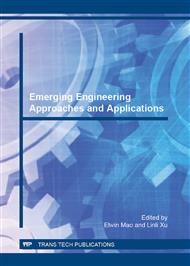p.26
p.31
p.38
p.42
p.47
p.52
p.57
p.62
p.66
Correlation Analysis of Behavioral Factors of Construction Safety Based on the Chi-Square Test
Abstract:
The construction safety supervision errors can lead to unsafe behavior; further affect the working conditions of workers and result in accidents at last. The probabilities of data are provided by statistical analysis between the different types of neighborhood-level factors by the independence of the chi-square test. The relationship analysis of the independence between the behavioral factors has been performed in order to find the non-independent factors. Among the Human Factors Analysis and Classification System (HFACS), the impact of the high-level factors on the bottom level is determined. Based on the data, the work path of various factors in the HFACS frame is confirmed and it can be a reference for the development of the preventive measures.
Info:
Periodical:
Pages:
47-51
Citation:
Online since:
September 2011
Authors:
Permissions:
Share:
Citation:


